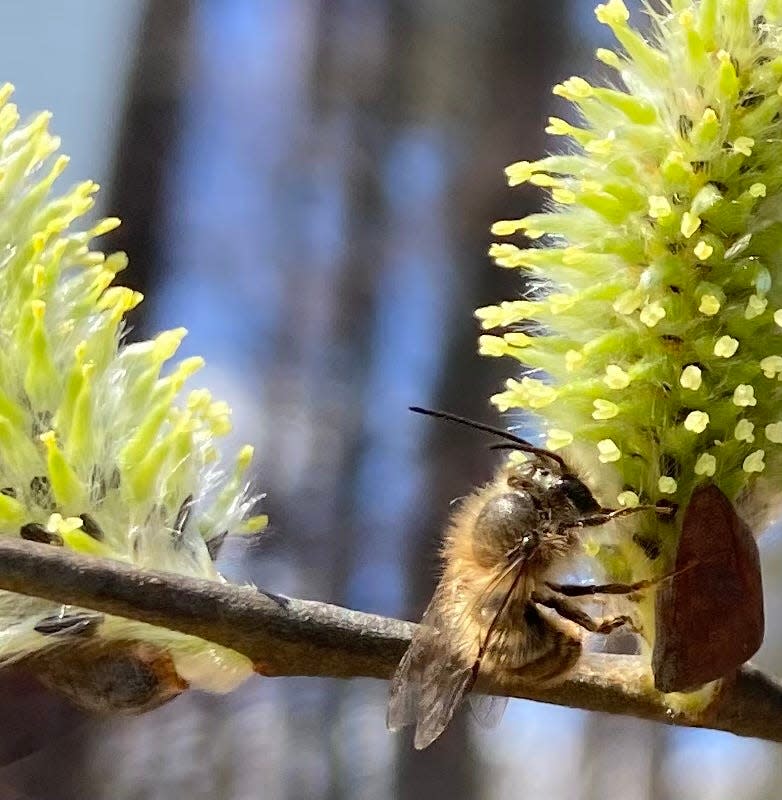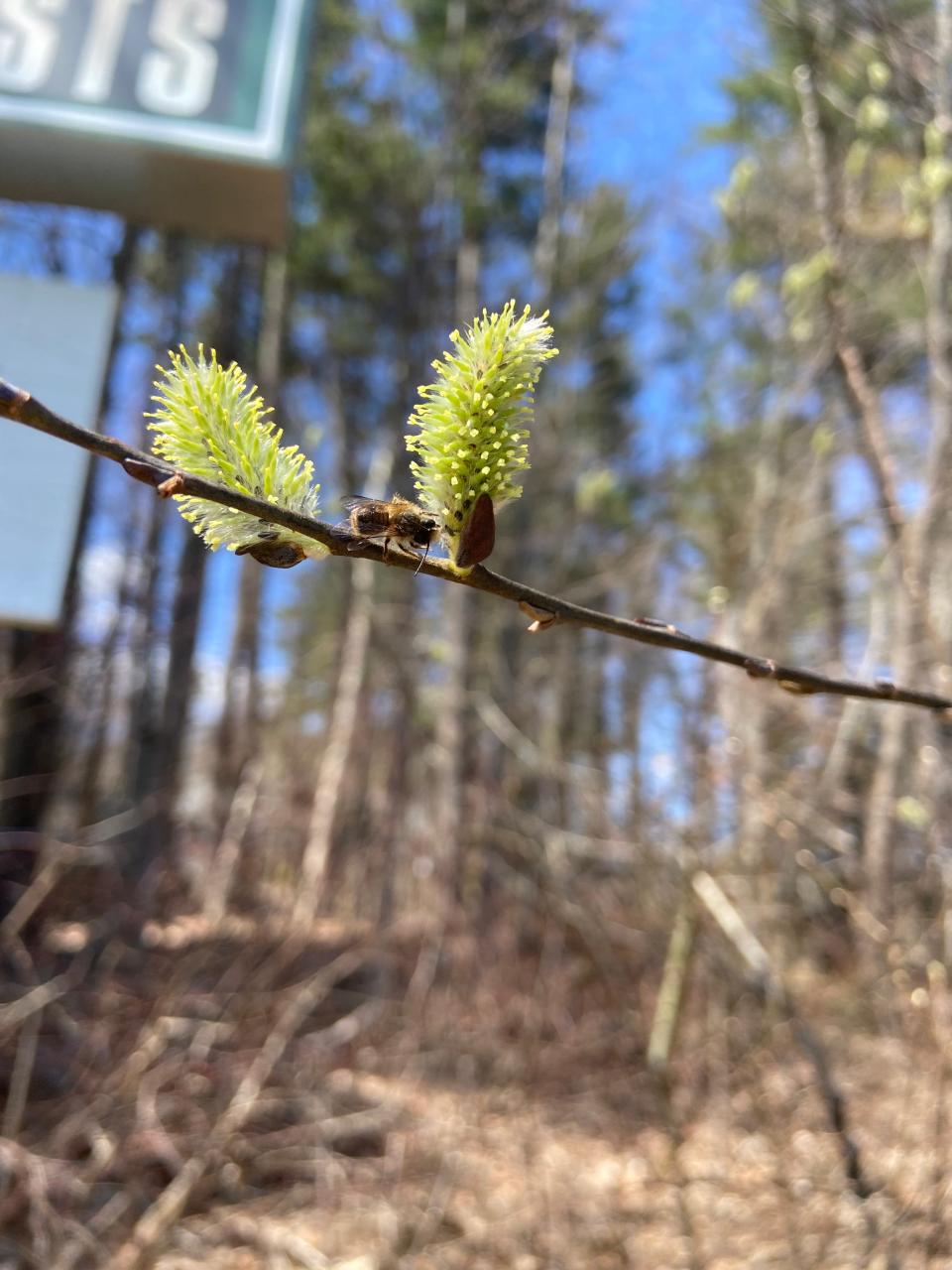Pussy willow's first flowers vital to insects emerging from hibernation
I was out with students taking pictures of tree buds as part of our citizen science Budburst project. Only two types of tree buds had opened up yet, both flowers, red maples and pussy willow. The red maples were too high up to get a good look at, but the lower-down pussy willows were swarming with flies and bees. I hadn’t really realized what those fuzzy little pussy willow catkins were (I should have) until watching one being hugged by a bee. They’re flowers!
This is a critical time of year for insects emerging from winter hibernation or torpor. For nectar and pollen-feeding insects, there aren’t many flowers available yet. The woodland wildflowers are almost ready to bloom, but not yet. The fruit trees and bushes - like the blueberries and cherries in our area - are just about to bloom, but not yet. What’s left are the other, less noticeable flowers that adorn some of our local trees.

All of the trees in our backyards that are not pine trees (coniferous trees) are angiosperms. These are plants with flowers and fruit, whose seeds are enclosed in an ovary. Some in this group have flowers that are insect-pollinated.
So, that pussy willow catkin is a flower, but a rather weird one at that. The flower that usually comes to mind is a structure with petals surrounding the parts that contain the pollen (the stamen which usually consists of a filament holding up the anther, the pollen-bearing part) and the ovaries which usually lie at the bottom of a structure called the carpel.
How are pussy willow flower's different?
A pussy willow flower is different. It's what's called a catkin, tightly bunched stamens or carpels, no colorful petals. According to the Brooklyn Botanic Garden, “Pussy willows are dioecious, meaning there are both male plants and female plants. Only male plants produce the fuzzy flowers. Home gardeners may be disappointed if they wind up with a female tree, but the flowers on female plants are equally funky — they just look more like greenish hairy caterpillars.” Pussy willows (all willows in fact) produce copious amounts of a strong scented nectar that draws bees and other insects for miles.
Pussy willows aren’t just important for early, native pollinators, they also host a wide variety of pollinating insects. According to the Xerces Society, a non-profit environmental organization that focuses on the conservation of invertebrates considered to be essential to biological diversity and ecosystem health, “As a larval host plant, it is broadly used by some 18 butterflies and moths including the exotic-looking cecropia moth (Hyalophora cecropia) and Io moth (Automeris Io), as well as the eastern tiger swallowtail (Papilio glaucus) and mourning cloak butterfly (Nymphalis antiopa) amongst many others.” These butterflies and moths lay eggs on pussy willows so that their caterpillars will have something to eat when they hatch out.
How can we be better neighbors to animals? Center For Wildlife's rescued hawk teaches us.
Finding signs of spring at the beach: Even the seaweed knows it's a new season

Learning about the value of some of our native shrubs and trees, pussy willows, red maple and speckled alder to name a few, to pollinating insects has really opened my eyes to what having a pollinator garden really means. We have been trying to plant lots of native wildflowers to help out the beleaguered insects in our neighborhood for a long time, but are now looking to the trees. I had wanted to grow some pussy willows as an ornamental addition to a hedge, but now plan to plant even more because of their value to pollinators in early spring and as hosts later on in the season. It’s critical to get only native plants in order to attract native larval host species. Exotic ornamentals don’t work.
It’s a great time to go out for a walk and look for fuzzy pussy willow catkins. They should be maturing over the next few weeks and will soon be, if they aren’t already, loaded with pollinating insects.

Susan Pike, a researcher and an environmental sciences and biology teacher at Dover High School, welcomes your ideas for future column topics. She is looking for readers to send her the signs of spring they're noticing so she can document them on her website pikes-hikes.com. Send your photos and observations to spike3116@gmail.com. Read more of her Nature News columns online at Seacoastonline.com and pikes-hikes.com, and follow her on Instagram @pikeshikes.
This article originally appeared on Portsmouth Herald: Pussy willow's first flowers vital to insects emerging from hibernation

